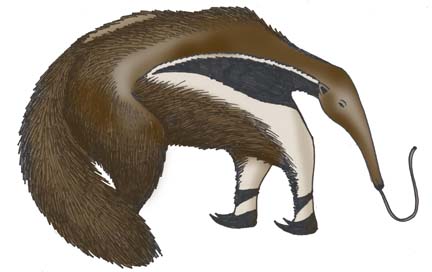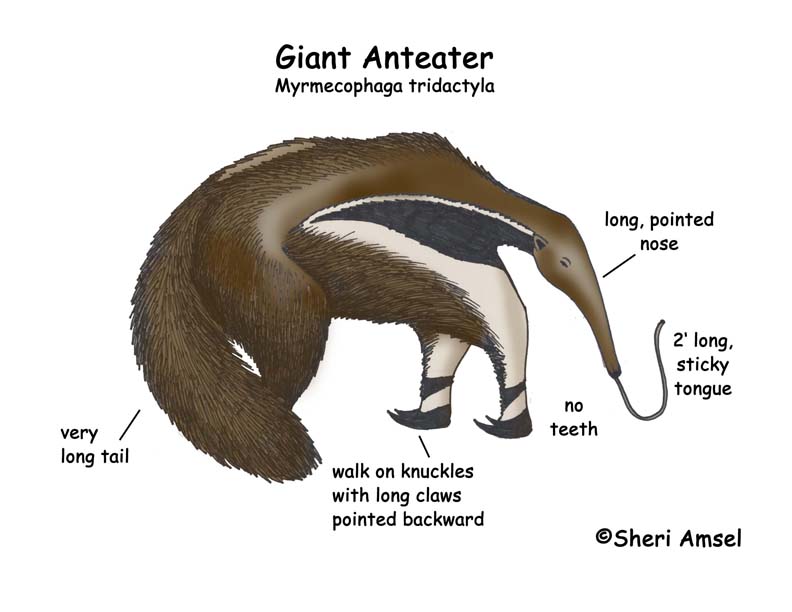

They are found from southern Mexico to South America.
They live on the grasslands, and in deciduous woodlands and rainforests. They will only live in areas not developed. Once people start developing an area, the giant anteaters disappear.
Including their tail, the giant anteater can reach more than 6 feet long. They have a very long, pointed nose made of a boney tube with no teeth and a 2-foot long, sticky tongue. They have thick skin with long hair (1.5 feet long). This protects them from the bite of angry ants. They have a funny way of walking on their knuckles with their long claws pointed backward. They have a very long, thick tail that can reach 3 feet long. They have a thick, black stripe that runs across their chest and down their sides, outlined in white. Males can reach 100 pounds (45kg) and are somewhat larger than the females. They have an excellent sense of smell, but don't see very well. They have a very low body temperature (the lowest of any land animal).
They move slowly, sleeping up to 16-hours a day. They will often lay down anywhere to sleep and wrap themselves in their thick tail. They live alone except to mate or females with young.
They eat ants and termites. They sniff out an ant mound and rip it open using its sharp claws. Then they suck down all the ants by the thousands.
They have very few predators, but may be killed by big cats like, mountain lions or jaguars.
Females are pregnant for 6.5 months (gestation). They have one baby, which they carry on their back.
No one knows how long they live in the wild, but they can live more than 25 years in captivity. They are listed as a "vulnerable" species.
Kingdom: Animalia
Phylum: Chordata
Subphylum: Vertebrata
Class: Mammalia
Order: Pilosa
Suborder: Vermilingua
Family: Myrmecophagidae
Genus: Myrmecophaga
Species: Myrmecophaga tridactyla
When you research information you must cite the reference. Citing for websites is different from citing from books, magazines and periodicals. The style of citing shown here is from the MLA Style Citations (Modern Language Association).
When citing a WEBSITE the general format is as follows.
Author Last Name, First Name(s). "Title: Subtitle of Part of Web Page, if appropriate." Title: Subtitle: Section of Page if appropriate. Sponsoring/Publishing Agency, If Given. Additional significant descriptive information. Date of Electronic Publication or other Date, such as Last Updated. Day Month Year of access < URL >.
Amsel, Sheri. "Anteater (Giant)" Exploring Nature Educational Resource ©2005-2024. December 14, 2024
< http://www.exploringnature.org/db/view/457 >

